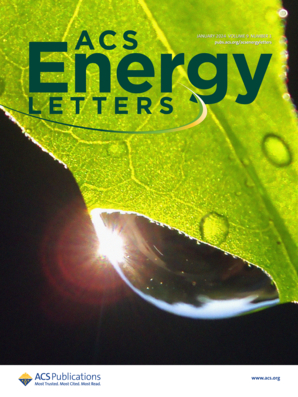通过原位表面重建的空气降解富镍阴极的升级回收
IF 19.3
1区 材料科学
Q1 CHEMISTRY, PHYSICAL
引用次数: 0
摘要
富镍阴极以其高比容量而闻名,但由于其对大气中微量水分的固有敏感性,需要极其干燥的条件才能长期储存。一旦阴极表面暴露在湿气中形成LiOH/Li2CO3,这些杂质不可避免地阻碍Li插入/提取大块电极,同时导致活性Li源的进一步损失。在这项工作中,我们提出通过在LiPO2F2水溶液中进行简单的磷化反应,将废NCM82颗粒(S-NCM82)上的LiOH/Li2CO3层转化为高动力学Li3PO4/LiF间相。同时,这种共形界面防止了与电解质的副反应,减轻了使用过程中的结构应变。再生的NCM82电极(R-NCM82)在5C时的比容量高达102 mAh/g,超过了原始NCM82 (P-NCM82)的79 mAh/g。此外,R-NCM82//Gr全电池在1C下循环300次后显示其初始容量的76%。这种转化过程很容易扩展,可以激发升级回收技术的发展,用于再生各种废电极。本文章由计算机程序翻译,如有差异,请以英文原文为准。

Upcycling of Air-Degraded Ni-Rich Cathodes via In Situ Surface Reconstruction
Ni-rich cathodes are well-known for their high specific capacity but require extremely dry conditions for prolonged storage due to their inherent sensitivity to tiny amounts of moisture in the atmosphere. Once LiOH/Li2CO3 is formed from exposure to moisture on the cathode surface, these impurities unavoidably obstruct Li insertion into/extraction out of bulk electrodes and simultaneously cause a further loss of the active Li source. In this work, we propose to convert the LiOH/Li2CO3 layer on spent NCM82 particles (S-NCM82) into a high-kinetic Li3PO4/LiF interphase via a simple phosphide reaction in aqueous LiPO2F2 solution. Meanwhile, such a conformal interphase prevents side reactions with electrolytes and alleviates structural strain during the service. The regenerated NCM82 electrode (R-NCM82) demonstrates a high specific capacity of 102 mAh/g at 5C, surpassing the 79 mAh/g observed in the pristine NCM82 (P-NCM82). Additionally, the R-NCM82//Gr full-cell exhibits 76% of its initial capacity after 300 cycles at 1C. This conversion process is easily scalable and could inspire the development of upcycling techniques for regenerating various spent electrodes.
求助全文
通过发布文献求助,成功后即可免费获取论文全文。
去求助
来源期刊

ACS Energy Letters
Energy-Renewable Energy, Sustainability and the Environment
CiteScore
31.20
自引率
5.00%
发文量
469
审稿时长
1 months
期刊介绍:
ACS Energy Letters is a monthly journal that publishes papers reporting new scientific advances in energy research. The journal focuses on topics that are of interest to scientists working in the fundamental and applied sciences. Rapid publication is a central criterion for acceptance, and the journal is known for its quick publication times, with an average of 4-6 weeks from submission to web publication in As Soon As Publishable format.
ACS Energy Letters is ranked as the number one journal in the Web of Science Electrochemistry category. It also ranks within the top 10 journals for Physical Chemistry, Energy & Fuels, and Nanoscience & Nanotechnology.
The journal offers several types of articles, including Letters, Energy Express, Perspectives, Reviews, Editorials, Viewpoints and Energy Focus. Additionally, authors have the option to submit videos that summarize or support the information presented in a Perspective or Review article, which can be highlighted on the journal's website. ACS Energy Letters is abstracted and indexed in Chemical Abstracts Service/SciFinder, EBSCO-summon, PubMed, Web of Science, Scopus and Portico.
 求助内容:
求助内容: 应助结果提醒方式:
应助结果提醒方式:


